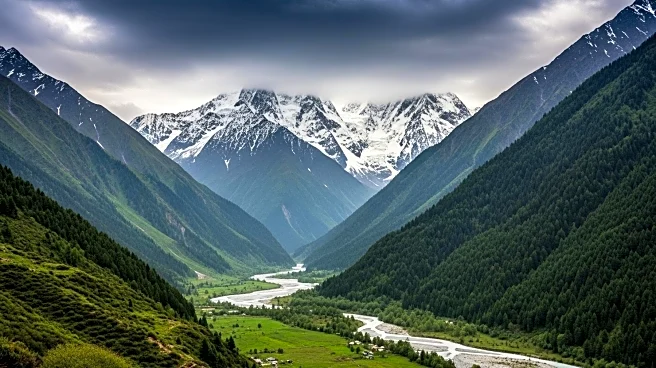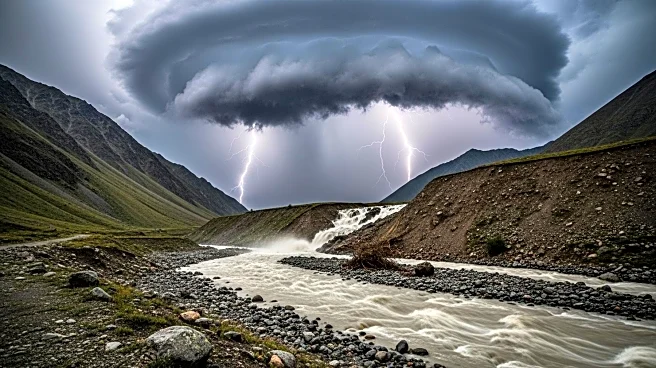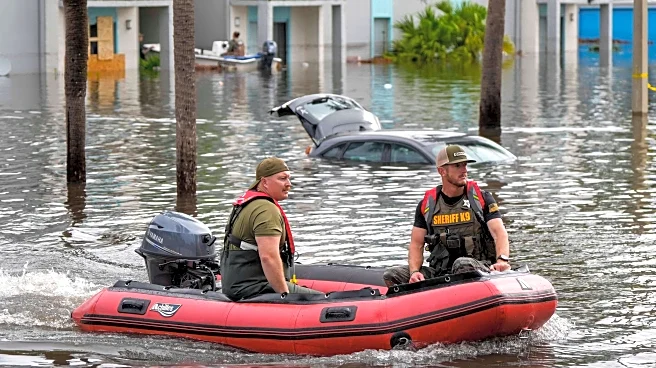What's Happening?
The autumn climbing season in the Himalayas has been severely affected by extended monsoon conditions, leading to dangerous weather patterns. Meteorologists have observed that the monsoon, traditionally ending in mid-September, now stretches into October, causing unpredictable weather. This year, a sudden blizzard stranded hundreds of tourists near Mount Everest, resulting in one death due to hypothermia and altitude sickness. The prolonged monsoon has led to extreme rainfall and snowstorms, disrupting trekking and mountaineering activities. The interaction between westerly disturbances and monsoon systems is identified as a key factor in these changes, with the westerly disturbances arriving earlier than usual, intensifying the monsoon effects.
Why It's Important?
The extended monsoon season poses significant challenges to the Himalayan tourism industry, which relies heavily on predictable weather conditions during the autumn months. The increased frequency of extreme weather events threatens the safety of trekkers and mountaineers, potentially reducing tourist numbers and impacting local economies dependent on tourism. The changes in weather patterns also highlight broader climate change issues, as increased moisture and altered atmospheric conditions contribute to these disruptions. Stakeholders in the tourism sector may need to adapt their strategies to accommodate these new weather realities, potentially affecting pricing, scheduling, and safety protocols.
What's Next?
Tourism operators and local authorities may need to reassess their preparedness for extreme weather events, including improving communication systems and rescue operations. Meteorologists will likely continue monitoring the interactions between westerly disturbances and monsoon systems to better predict future weather patterns. The tourism industry might explore diversifying its offerings to mitigate the impact of unpredictable weather, such as promoting off-season activities or investing in infrastructure that can withstand extreme conditions. Additionally, there may be increased advocacy for climate action to address the underlying causes of these weather changes.
Beyond the Headlines
The extended monsoon season in the Himalayas underscores the broader implications of climate change on global weather patterns. The interaction between different atmospheric systems, such as westerly disturbances and monsoons, may become more common, leading to unpredictable and extreme weather events worldwide. This situation raises ethical considerations regarding the responsibility of nations to address climate change and support affected regions. Long-term shifts in weather patterns could necessitate changes in global tourism strategies, with potential impacts on cultural exchanges and economic dependencies.













